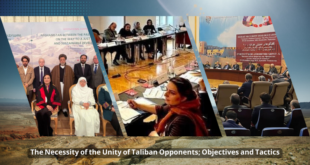Dr. Mohammad Sharif Haidari
The neglect of Afghan women’s suffering leads to the majority of society not becoming angry in the face of aggravating factors that intensify this suffering, such as widespread deprivation of women’s rights by the government. It prevents anyone from feeling fear and terror from all this inequality, discrimination, and deprivation. As a result, we witness that people do not show widespread and nationwide protest in the face of the prohibition of girls’ education and the closure of schools and universities to them. The denial of inequality and discrimination against girls and women does not turn into a universal demand.
Such a situation imposes social suffering on Afghan women—a suffering that is inherent to social relationships worldwide. It justifies or tolerates any form of imposed suffering through policies and can also be referred to as the suffering of the situation itself. Social suffering or situational suffering exists in contrast to the suffering of circumstances, which is the result of distressing events and incidents in specific situations throughout life, such as the death of loved ones, separation from loved ones, exile, illness, discrimination, and so on. The most important characteristic of the suffering of circumstances is its temporal, transient nature. However, the suffering of the situation is more enduring and long-lasting.
The social suffering experienced by Afghan women is both a result of social mechanisms and concealed and ignored by them. One of the key operational mechanisms for this concealment is constantly framing social suffering instead of situational suffering by the ruling authorities and political forces. The governing group in the country tries to attribute exceptional characteristics to women’s social suffering and present it as temporary and a product of specific conditions. It is evident that this is an interpretive tactic to justify and ensure the longevity of the ruling group’s policies.
Finally, it should be reminded that one of the characteristics of social suffering is its political nature, which often goes unnoticed by those who impose it. Social suffering, in addition to being a social and psychological phenomenon, is also highly political. Social suffering, from a historical and sociological perspective, is a source of power and motivation that seeks to put an end to the production of suffering and adversity. In this way, the potential stored in social suffering becomes a transformative intermediary and a force for change, turning it into a societal resource for critique and transformation towards better conditions.
Social suffering has the ability to generate a rebellious and antagonistic subject: someone who has reached the point of despair and does not see themselves as having anything to lose, someone who, in Marx’s words, “has nothing to lose but their chains.”
Dostoevsky also writes: “It has become clear to me that like ourselves, the underground men, by sealing their mouths and sew their lips together. Such individuals have the power to sit for forty years in the darkest dungeons, in the most remote corners, secluded and meditative. But if we bring these people into the light of day so that they see people and light, then all that isolation, seclusion, and prolonged silence shatters and becomes meaningless; at that moment, those people who have been silent and quiet for years begin to speak; they talk, they talk.”
In this way, imposing widespread social suffering on Afghan women and their endurance by the people, while revealing its social nature, can also alert both the imposers of suffer and researchers to better understand the prospects of changes and influential forces in the future social transformations of the community.
 حزب شهروندان افغانستان وبسایت رسمی حزب شهروندان افغانستان
حزب شهروندان افغانستان وبسایت رسمی حزب شهروندان افغانستان


